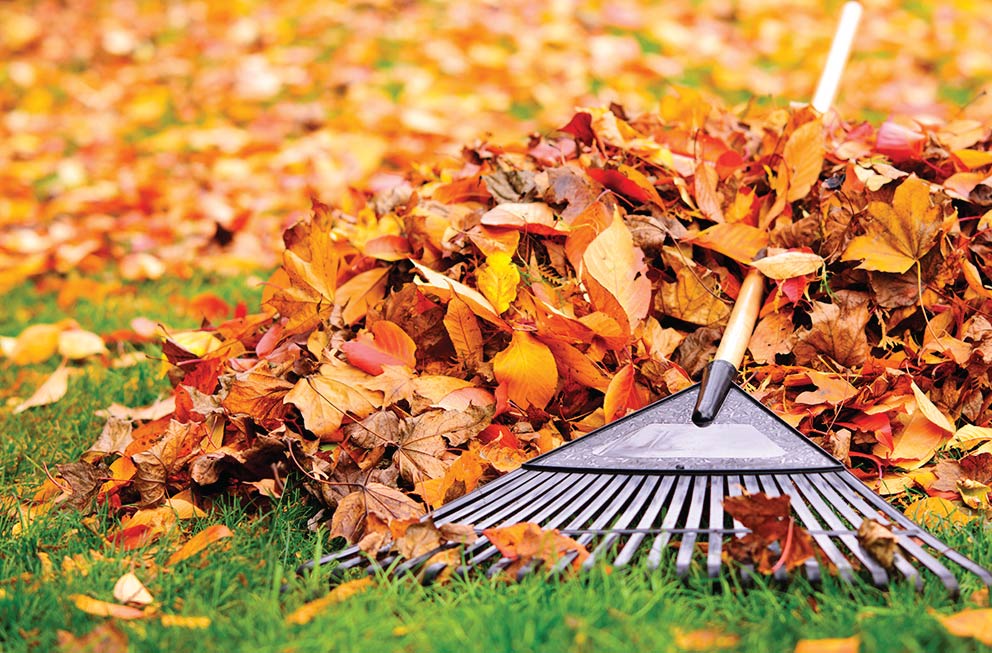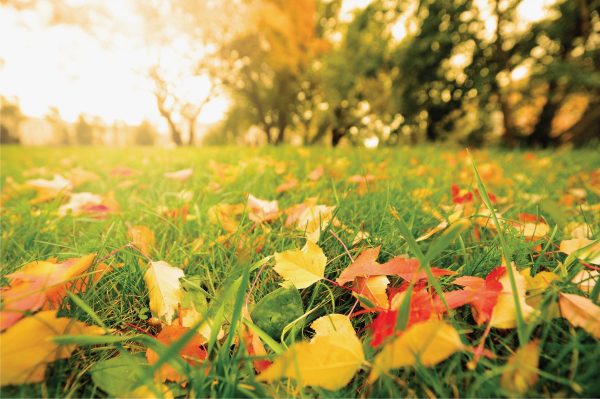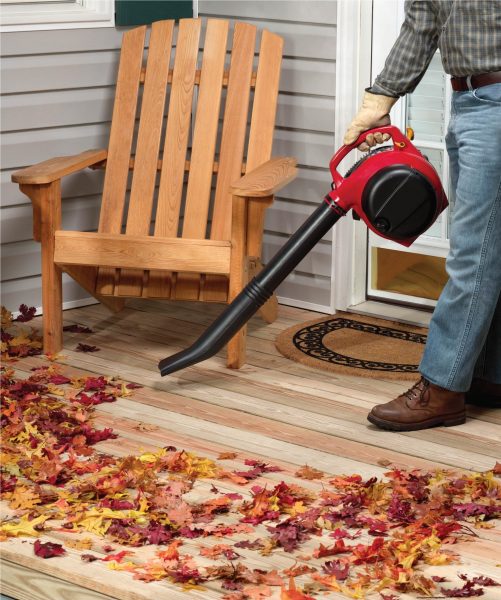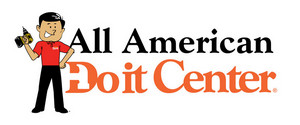
Leaf Cleanup Tips
Leaf Cleanup Tips
Autumn is a unique season. Temperatures begin to cool off, quite rapidly in some areas. The leaves begin to change colors with pigments leaving a beautiful collection of Red, Orange, yellow, Green, Brown, and Burgundy colored leaves. As the cooler days and colder nights become more extreme, the trees go into a dormant state in preparation for the winter. In no time, the plethora of colored leaves that adorned the community soon lie on the ground. Here are some leaf cleanup tips for this fall, that can expedite your time.

Do I have to rake leaves?
Of course the easy answer is no, but the correct answer is yes. Leaves left unattended are not only an eyesore, but they can also cause damage your lawn in a variety of ways. While it is still growing season, Leaves can deprive your lawn of adequate nutrition by blocking water, nutrients, and healthy air from reaching the roots, invite lawn pests, diseases, and problems like snow, mold and brown patch. Leaves will also prevent your lawn from one of the most important things for growing healthy grass: sunlight.
Here are some things you can do to help make your leaf cleanup more efficient this fall.
Have a Plan
Before you start cleaning up leaves, check your local area for guidelines and regulations for disposing of yard waste. You don’t want to move a pile of leaves to the curb to find out that leaf pickup doesn’t start for 2 weeks. This will kill the grass underneath and inhibit mold growth.
Start Early
It is best to start leaf clean up early in the season as this will allow for several smaller cleanup tasks, rather than procrastinating it to do all at once. Depending upon the amount of leaves on your yard, you can utilize your lawnmower to mulch the leaves into the turf of the grass. If there are too many leaves to mulch into the turf, use the bagger attachment on your mower. The bagger attachment will allow you to tackle two jobs simultaneously – mowing and picking up leaves.
Utilize Power Equipment
We recommend using a leaf blower to reduce the physical strain that you may take on during fall cleanup. If you do not own a leaf blower, you’ve come to the right place. We have gas, electric, and battery powered blowers. For larger projects, our rental department has a tow-behind lawn sweeper that you can pull with a riding mower or ATV, reducing the cost of a power equipment investment.
Do you have a brand new leaf blower, or are you just now digging it out of the garage for the first time since last year? Make your job easier by following these leaf cleanup tips or steps:
- Wait until the leaves are dry before using a leaf blower. Wet leaves are hard to move unless you are using a high-powered blower.
- Blow leaves into smaller piles rather than blowing them across the yard.
- Use the wind to your advantage. Before you start moving the leaves, take a minute to determine wind direction and blow with the wind.
- Start closest to the house and blow away from it.
- Clean leaves out of your gutters first, if you are comfortable with working on a ladder. Be sure to practice proper ladder safety.
Use the Correct Rake
If you don’t need a leaf blower for the size of your yard, a sturdy rake is the next best thing. Using the correct type of rake is essential for leaf clean up. Our guide below can help you choose a leaf rake that will best suit your specific needs.
Should I buy a plastic, metal, or bamboo rake head?
Plastic
Plastic rakes generally have a lower starting price than metal rakes, making them a bit more economical to buy. These rakes are typically lighter than their metal counterparts, which makes a big difference when wielding it for hours at a time. Plastic rakes can have a long life, but don’t deal with exposure to the elements well, and will get brittle over time.
Metal
Metal rakes’ strength give it distinct advantage over plastic and bamboo. The steel tines give it the ability to last for years. The strength means these rakes can be used to remove both wet and dry leaves and thatch from your yard.
Bamboo
Bamboo rakes are used far less than metal or plastic because the bamboo tines aren’t as durable as metal or plastic. However, if you’re looking for the absolute lightest material of the three types of rakes, bamboo is the way to go.
Other features to consider:
Is the rake head adjustable?
This is an important factor to consider when choosing a rake. These tine adjustments on a rake are used to control the flexibility of the tines for different raking conditions. For example, raking wet leaves requires more force from the tines. As a result, you would want to position your tines closer together to be more sturdy and less flexible.
How comfortable is the rake handle?
Since you will be most likely holding this rake for an extended amount of time, the handle is something you should examine. Rakes have come a long way and are now offered with ergonomic designs to reduce fatigue and injury. Rakes with a cushion grip could mean the difference between blisters or no blisters after a long work day.
Leaf Transportation
Once the leaves are put into piles, lay a tarp or a large blanket on the ground beside the pile. Then rake the pile onto the tarp/blanket. Next, grab all 4 corners of the tarp/blanket and slide it across the lawn to the desired location. An alternative is to use a lightweight trash can to fill with the leaves.
Leaf Pick Up
If your neighborhood requires that leaves be put in leaf bags, there are a few tricks that can speed up this bagging process.
- A lawn & yard bag holder or a properly sized barrel will hold the bag open while packing with leaves.
- Use a leaf scoop to drop the leaves into the bag. If you don’t own a leaf scoop, you can use your rake and your hand to grab the leaves.
- If your municipality does not have curbside leaf pickup, and you have to deliver them to a drop off station, like you might for grass clippings, you can dump them into lightweight trash cans, bag them, or if you own a pickup, place them in the back under / over a tarp.
So when it comes time to get the yard cleaned up this fall, use these leaf cleanup tips to get the job done.
